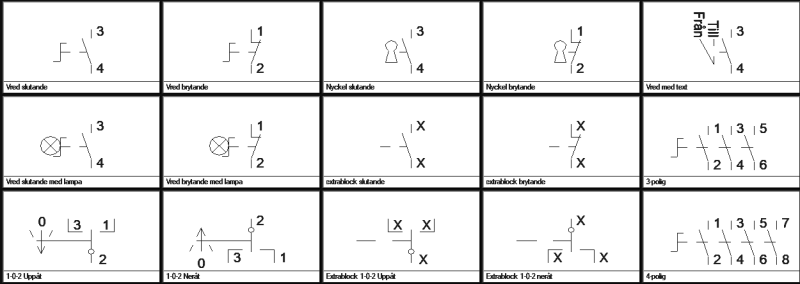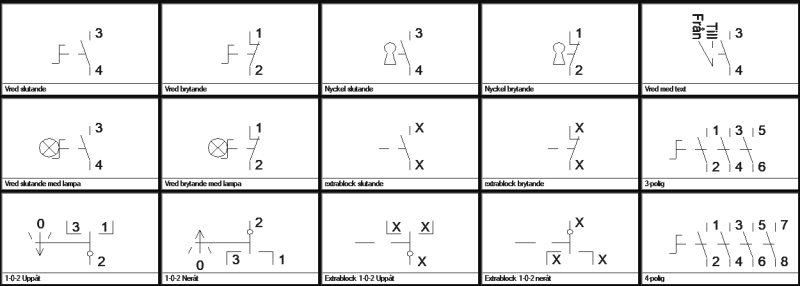flexoprinting said:
However, somehow not only do contact blocks get mixed up but also the switch blocks as well. A few weeks ago I found
two N/O, (auto/manual) blocks with a switch block that engaged both at the same time because the cam action was so different.
I've been there too and got the tee-shirt.
That is the condition that I am trying to describe
That is the condition that I am trying to avoid.
I have generally been able to follow a control drawing.
I agree that in some circuits, it is not feasible to show all contact positions in all operator positions.
Drum switches and drum sequencers are two examples that come readily to mind.
In such cases my preference is that the connections be described in some type of truth table.
Rather than showing the contact as two small circles with a bar in either the normally open or in the normally closed position, The two small circles are shown without any connecting bar. The technician is not misled by a contact shown in the wrong position. He sees and checks the truth table.
I have read drawings that were easy to read and I have read drawings that were confusing and misleading, but I was able to eventually understand them.
My first supervisory position was in a large automated mill.
The stated cost per minute of down time was equal to a days pay for a foreman. When the mill went down we were under extreme pressure to get it running again.
Fortunately our drawings were excellent.
I have tried to suggest the most understandable and least confusing method of depicting the switch from the point of view of the people who may be trying to repair a stopped machine under the pressure of lost production. Time is often of the essence and any confusion with a drawing is too much confusion.
Did we bother to complain about the confusing diagrams? No. The equipment had to be fixed within minutes or at the most hours. Once the equipment was back in operation we exchanged a few snide remarks about the designers and moved on.
Not one customer has complained.
Why am I not surprised. It's not worth the time.
Actually I did ask for some information once and when I got the information I did complain. It turned out that the drawings being shipped with the gen-sets were not the same as the drawings being sent to the engineering sales office. Once we got that sorted out, the sales engineer and myself became good long distance friends and worked well together for quite a few years.
Lionel, I have a lot of respect for you and do not often find myself in disagreement with you.
I think that we must be on different pages.
I have no issue with a drawing which shows a contact block with no contact shown and the action described in an accompanying truth table.
I do get a little reactionary when a drawing clearly shows a contact as closed when the truth table shows the contact open.
Bill
--------------------
"Why not the best?"
Jimmy Carter

![[bomb] [bomb] [bomb]](/data/assets/smilies/bomb.gif)



![[smile] [smile] [smile]](/data/assets/smilies/smile.gif)
